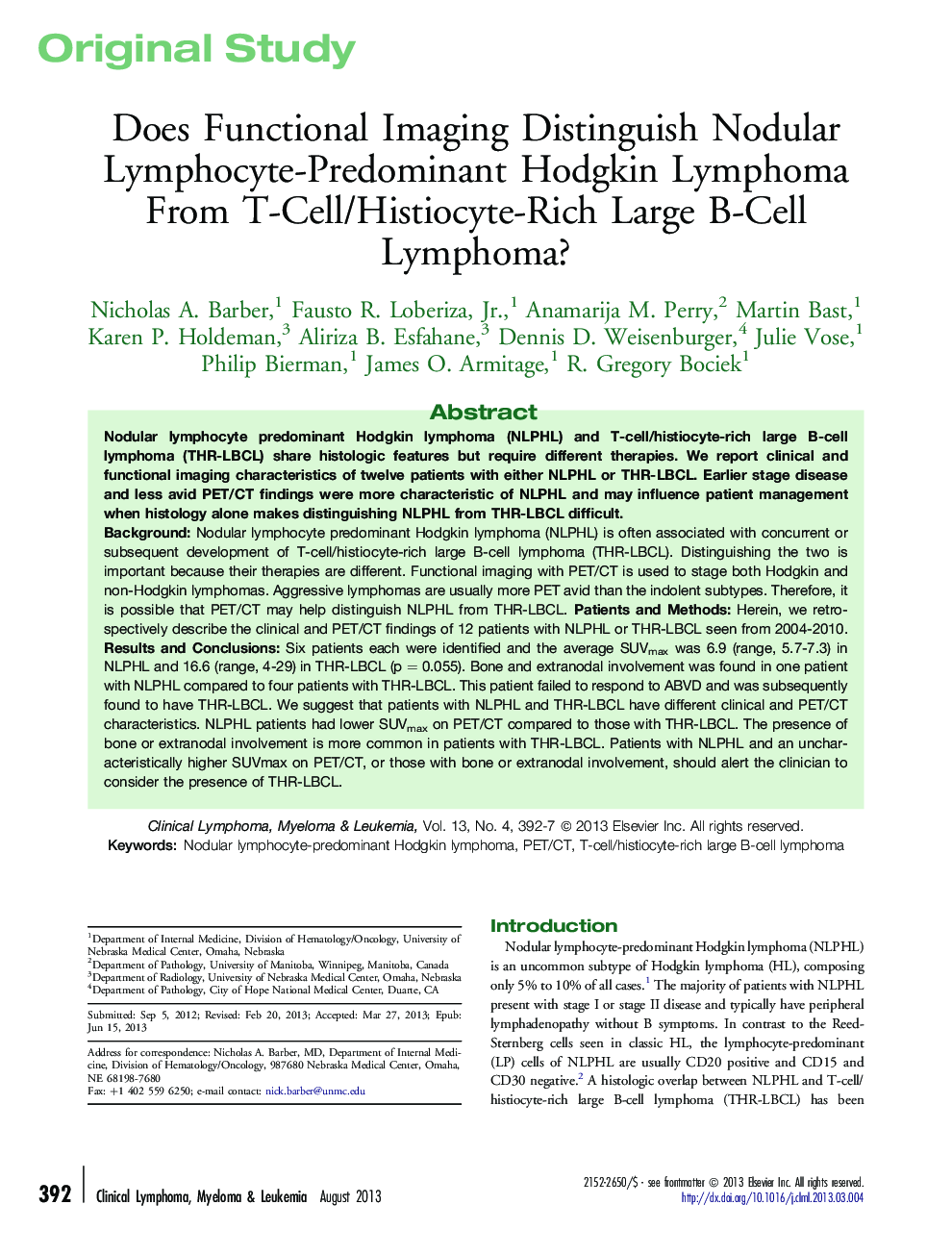| Article ID | Journal | Published Year | Pages | File Type |
|---|---|---|---|---|
| 2754984 | Clinical Lymphoma Myeloma and Leukemia | 2013 | 6 Pages |
BackgroundNodular lymphocyte predominant Hodgkin lymphoma (NLPHL) is often associated with concurrent or subsequent development of T-cell/histiocyte-rich large B-cell lymphoma (THR-LBCL). Distinguishing the two is important because their therapies are different. Functional imaging with PET/CT is used to stage both Hodgkin and non-Hodgkin lymphomas. Aggressive lymphomas are usually more PET avid than the indolent subtypes. Therefore, it is possible that PET/CT may help distinguish NLPHL from THR-LBCL.Patients and MethodsHerein, we retrospectively describe the clinical and PET/CT findings of 12 patients with NLPHL or THR-LBCL seen from 2004-2010.Results and ConclusionsSix patients each were identified and the average SUVmax was 6.9 (range, 5.7-7.3) in NLPHL and 16.6 (range, 4-29) in THR-LBCL (p = 0.055). Bone and extranodal involvement was found in one patient with NLPHL compared to four patients with THR-LBCL. This patient failed to respond to ABVD and was subsequently found to have THR-LBCL. We suggest that patients with NLPHL and THR-LBCL have different clinical and PET/CT characteristics. NLPHL patients had lower SUVmax on PET/CT compared to those with THR-LBCL. The presence of bone or extranodal involvement is more common in patients with THR-LBCL. Patients with NLPHL and an uncharacteristically higher SUVmax on PET/CT, or those with bone or extranodal involvement, should alert the clinician to consider the presence of THR-LBCL.
